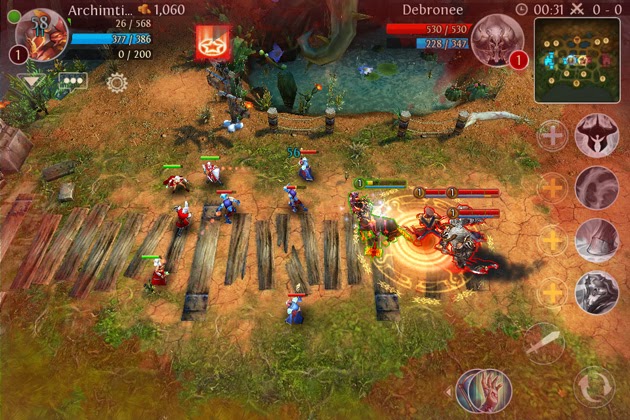Last week, Mikhail Katkoff launched a series of articles on midcore. Today we are publishing a slightly revised version of the first material, it is dedicated to game cycles in midcore projects.
The game cycle in midcore games has three important features.
- Firstly, it is double;
- Secondly, it easily adjusts the length of the average session;
- Thirdly, an important part of the game is the meta-game, which is very difficult to see by looking directly at the loop diagram.
Double cycle
The double cycle can be considered using the example of Clash of Clans.
- The first is to collect resources, spend on buildings;
- The second is collecting resources, spending on troops, attacking.
Each cycle, of course, is divided into stages.
In both cycles of Clash of Clans, the first stage is the collection of resources.
Important: Collecting resources is an action that players can perform constantly. In other words, at any moment when the user opens the application, he can immediately collect resources. Thus, the game encourages short-term visits. A long absence, on the contrary, is penalized (the base can be attacked and all resource-producing buildings can be emptied).
Collecting resources and the threat of losing it is the main driver of short–term, but constant visits to the game by low-level users.
The second stage in the first cycle is the construction of buildings. Due to the fact that more and more time is spent on construction over time, the cycle, as a whole, is increasing in time. At the same time, it is becoming increasingly difficult to accumulate a large number of resources. On the one hand, it stimulates monetization (money can speed up construction), on the other, it can scare off non-paying audience.
The second cycle grows slightly in time. Even at high levels of development, no more than a few hours are spent on it. That is, the player gets additional motivation to visit the project.
The presence of two cycles allows the user to either exit the game after completing the first cycle, or continue playing within two cycles.
That is, they gathered resources, built a building and immediately cut off the army and went on the attack.
The advantage is that in such conditions, the length of the session can be very different. For example, the same collection of gold and elixir can take no more than 30 seconds, but the attack and delivery of new units for training can take about 5 minutes.
In ordinary farms, the game cycle is reduced to the collection of resources and the construction of buildings (we are not talking about the “canopy” of casual projects, which is played by plot tasks).
Card butlers use a different double cycle. If in Clash of Clans the second cycle is tied to PvP, then in Marvel War of Heroes (Rage of Bahamut clone) cycles are divided into single and multiplayer. Moreover, their own energy is spent on the use of each.
The single cycle is reduced to constant farming (during the passage of a series of fights) and collecting cards. A player can complete a level in less than a minute by collecting several cards.
PvP is reduced to a single battle and proceeds even faster.
By the way, yes, the logic is the same. It takes much more time to complete the maze (full cycle) at a high level than in the early stages, but the PvP cycle does not grow in time.
If we draw a red line on the double cycle: its implementation gives users additional motivation to visit the game, increases their returns (this is especially noticeable in the case of high-level players).
Session length
A long session is a big problem for a midcore game. Developers should avoid this by all means.
There’s nothing wrong with long sessions. Moreover, they indicate that the players like your game. But if each session requires at least a few minutes of incessant attention, this negatively affects the retention. If the user does not play the game several times a day during small breaks, the game does not turn into a habit. And our goal is to make the game a part of the user’s life, to tie him to the project.
Heroes of Orders & Chaos is a beautiful game, but a 10-minute session is far from what a mobile player can afford todayThe short session we talked about just above is exactly what allows you to do this (and this distinguishes successful midcore and hardcore projects from the rest).
The ability to quickly gather resources or fight an opponent once (where victory will depend on who has the total attack of all the cards in the deck more, and not on attention) – that’s what plays a role.
At the same time, the second cycle will allow you to increase the session time for those players who suddenly have not one minute, but as many as five.
Meta game
The meta–game is another component that can increase the session to hardcore indicators (in butler, you can spend hours on drawing up a deck, in Clash of Clans – the same hours on thinking through the defense).
According to Katkoff, one of the best meta-games is in VEGA Conflict, where the player can micromanage his shipsThis is the invisible part of the game cycle, the part of the game in which the player does not earn any resources, but remains involved, optimizing his game progress.
Short and medium–time sessions are a great way to engage the player, to make him return to the game throughout the day. But in order to create a real deep gameplay, which, in fact, distinguishes midcore projects from casual ones, the game should also offer long sessions during which the player could think through a strategy, as well as interact with other users.
A source: deconstructoroffun.com




